#prairie aster
Text

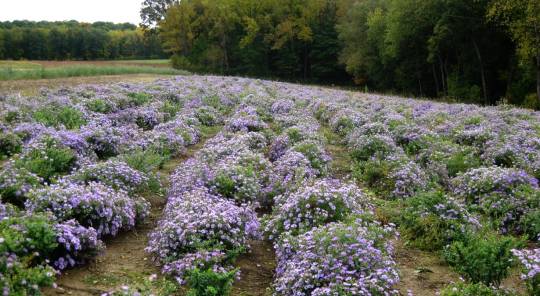

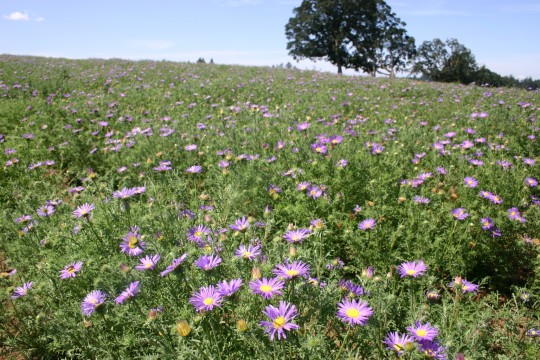


Different names of this flower: Tahoka Daisy, Prairie Aster, Tansy Aster and Machaeranthera Tanacetifolia. (Link)
#prairie aster#tahoka daisy#nature#photography#beautiful#flowers#meadow#field#scenery#landscape#woodland#purple flowers#earth#garden#wild flowers#gardening#view
32 notes
·
View notes
Text
Bzzz!
Just some bees in my garden and in the fields and on a neighbourhood walk. :)
Featured bees include bumblebees (native), green sweatbees (native), honeybees (invasive), carpenter bees (native), and some I'm not sure about.
Featured flower hosts include bull thistles (invasive weed), rose of sharon (invasive), New England aster (native), cup plant (native), starthistle (not native), Nuttall's sunflower (native), purple coneflower (native), anise hyssop (native), white wood aster (native), swamp milkweed (native), sow thistle (invasive weed), creeping charlie (invasive), creeping thistle (invasive weed), wild rose (native maybe), wild bergamot (native), bride's feathers (native), bigleaf lupin (native maybe or invasive), and upright prairie coneflower "Mexican hat" (native species, but a cultivar).
All my photos, unedited. Don't mind the weirdness of the third last photo. It's my phone's "portrait" which I found out belatedly can have, uh, interesting results.



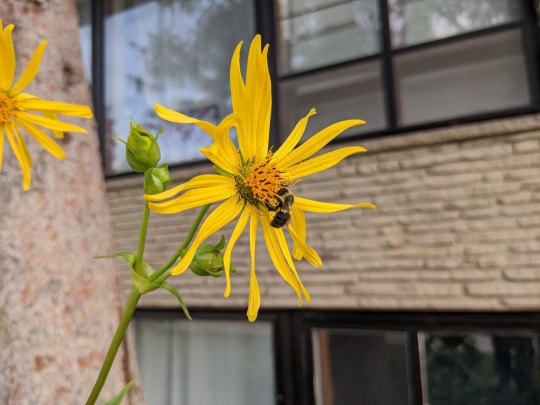



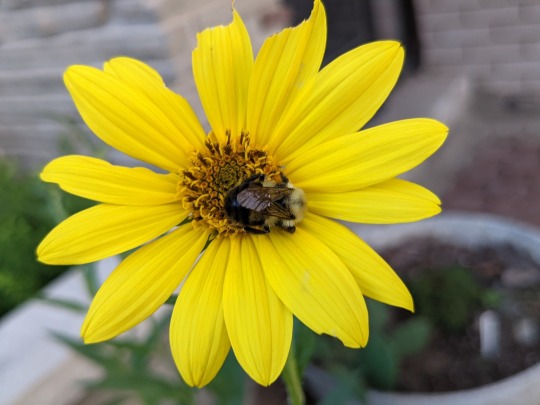




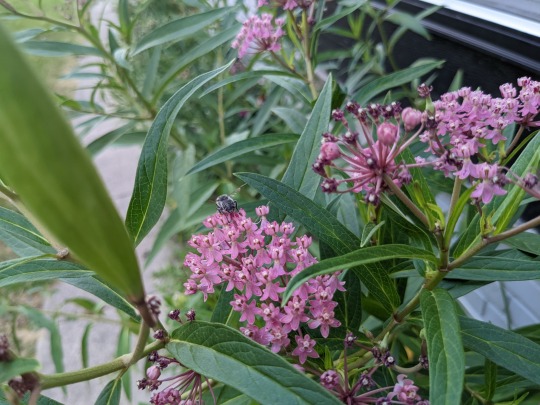

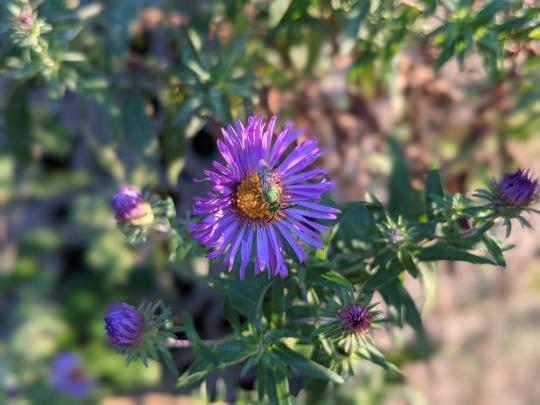

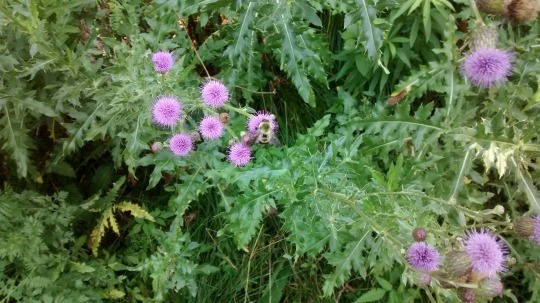
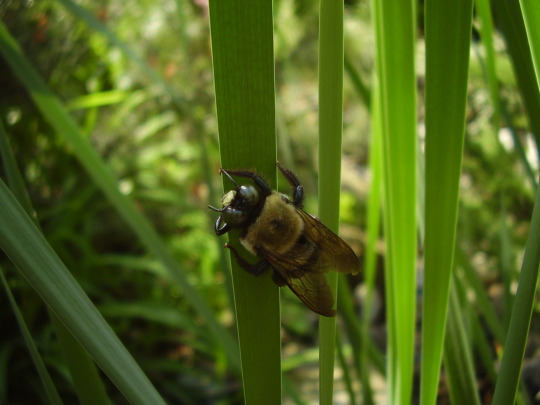

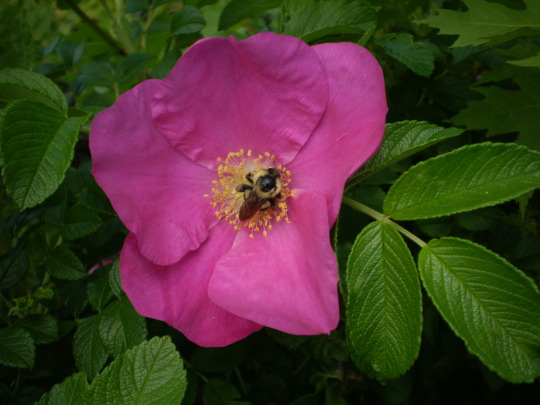

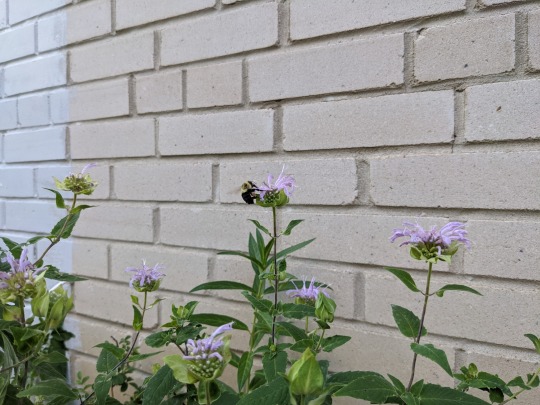


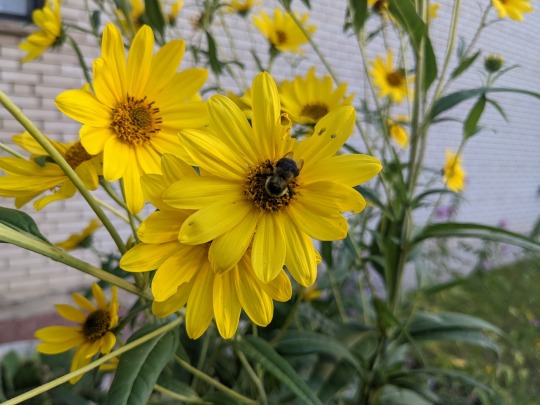
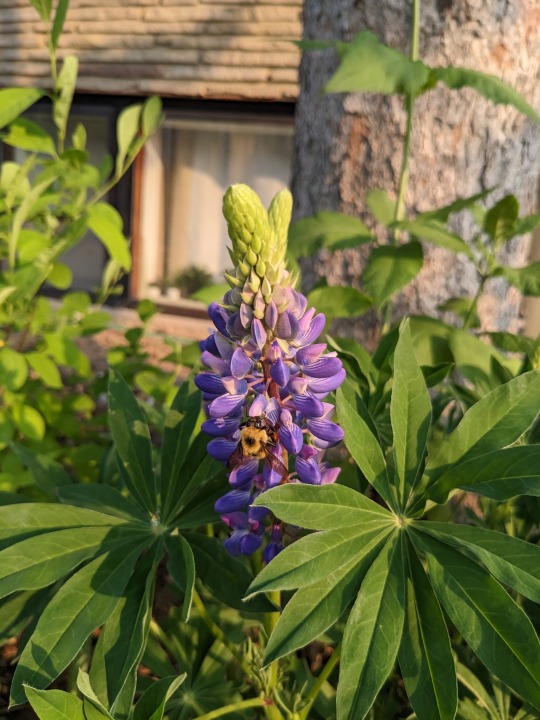

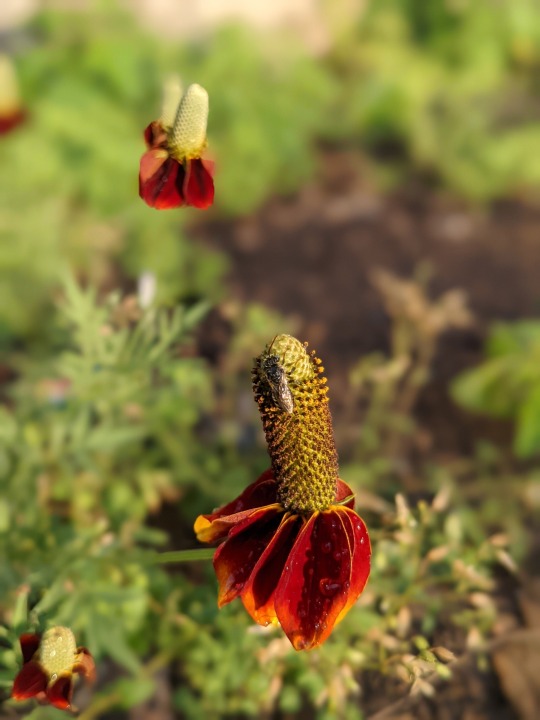
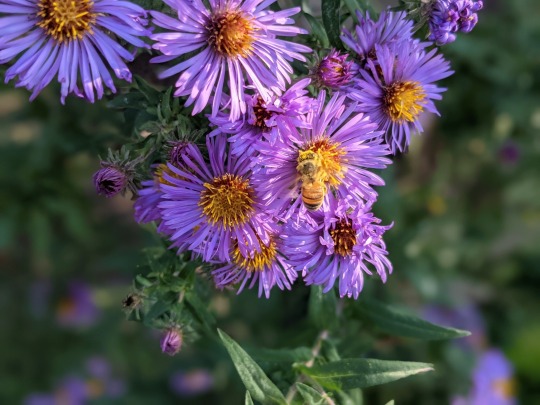

#bees#bumblebees#insects#hymenoptera#bees wasps and ants#honeybees#sweatbees#carpenter bees#my photos#photography#blackswallowtailbutterfly#bees on flowers#flowers#native North American plant species#native North American insect species#thistles#milkweed#sunflower#purple coneflower#upright prairie coneflower#swamp milkweed#lupin#bigleaf lupin#asters#New England aster#white wood aster#coneflowers#wild rose#starthistle#creeping charlie
7 notes
·
View notes
Text
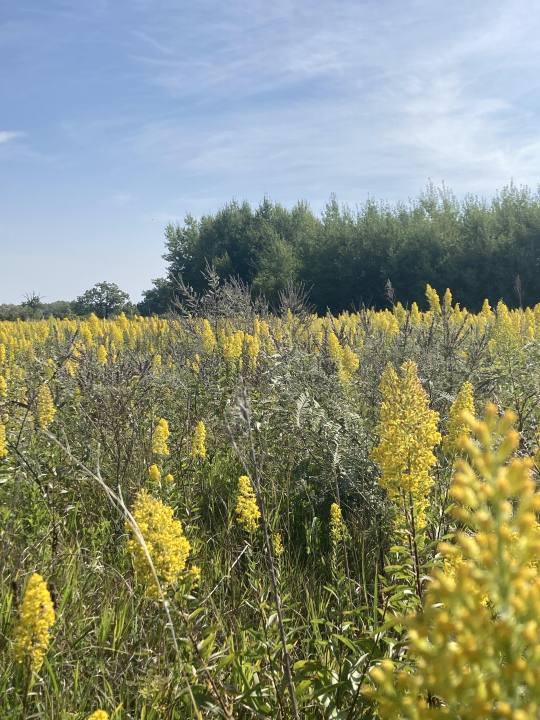
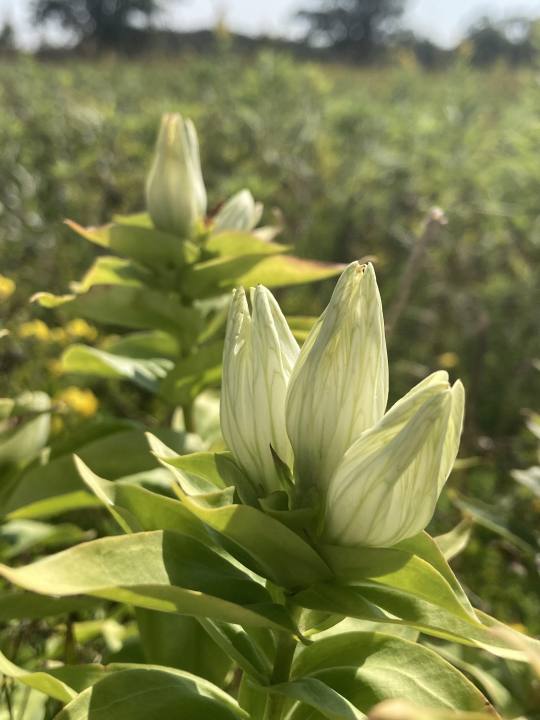
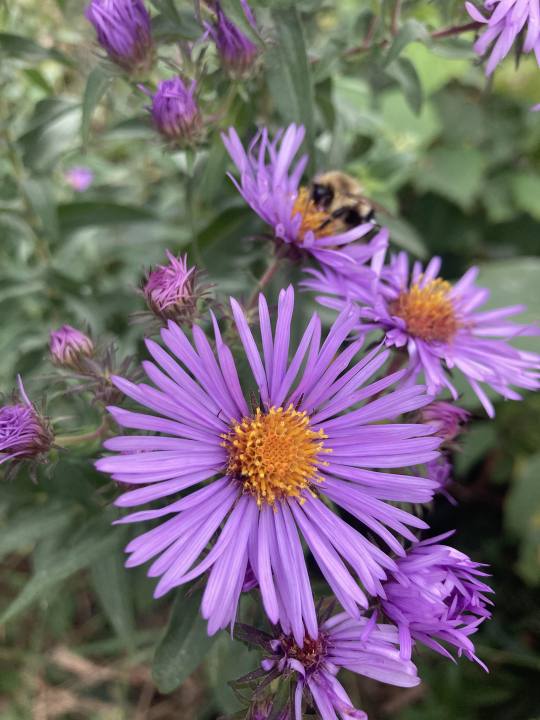
you say gatsby season, i say what the fuck are you talking about, it's prairie time!!!
My photos: September 2023
#prairie#goldenrod#new england aster#gentiana#wildflower photography#botany#plantblr#original photography on tumblr#bumblebees#midwestern flora#north american flora
4 notes
·
View notes
Photo
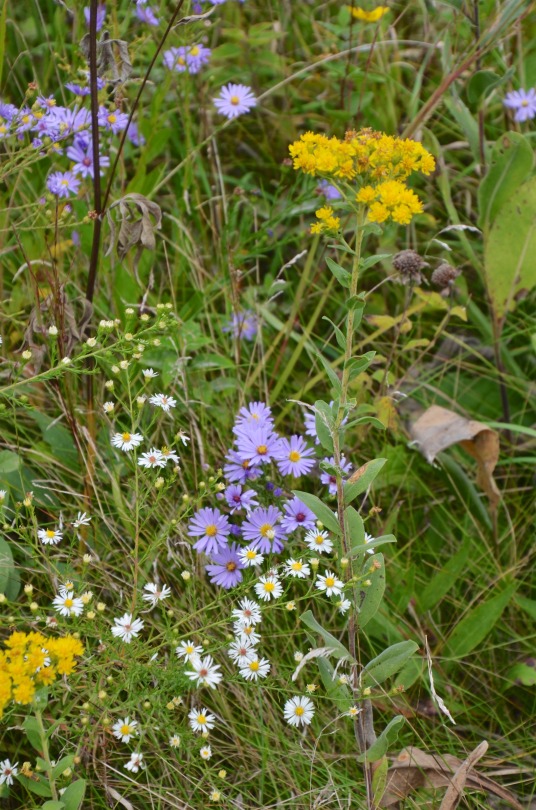
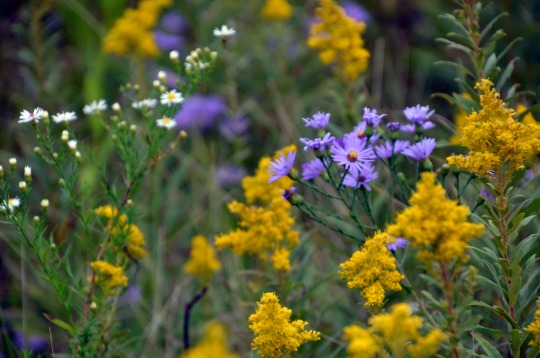
I took these photos yesterday at Nachusa Grasslands. New England Aster (the purple one), Hairy Aster (the white one) and Goldenrod (not willing to guess which type of the six or seven growing around here in Illinois). I’m posting because I just read an Op-Ed from Margaret Renkl in the New York Times, and this part smacked me:
In “Braiding Sweetgrass,” Robin Wall Kimmerer tells the story of her first-year intake interview at the university’s forestry school. When the interviewer asked her to explain her choice of major, she writes, “I told him that I chose botany because I wanted to learn why asters and goldenrod looked so beautiful together.”
4 notes
·
View notes
Text
everyone who lives in the bluegrass region of kentucky PLS take detailed photos of clovers and asters and basically all the little plants that you see ESPECIALLY in areas that are open and meadow or prairie like DOUBLE ESPECIALLY in sinkholes or rocky areas without much soil and stony hilltops and areas that have been grazed by cows but not very heavily. This place was a very unique ecosystem and I just know there are super-rare endemic species still hanging out somewhere.
in 2013 we found the kentucky clover which is a rare clover only found in the bluegrass region of kentucky. i just Know there are more rare plants
8K notes
·
View notes
Text
As illustrated in Figure 19.36, root system architecture varies widely among species, even those living in the same habitat.
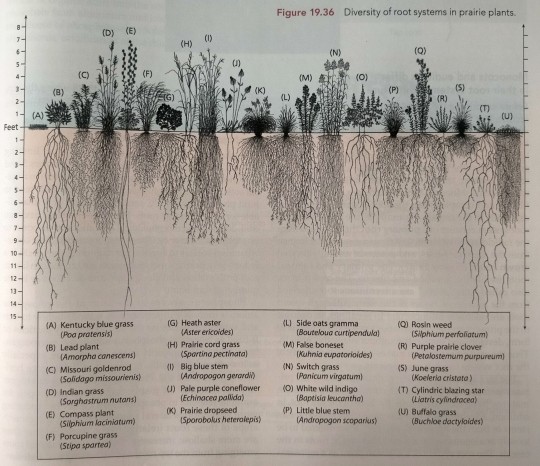
"Plant Physiology and Development" int'l 6e - Taiz, L., Zeiger, E., Møller, I.M., Murphy, A.
#book quote#plant physiology and development#nonfiction#textbook#root system#diversity#prairie#kentucky blue grass#lead plant#missouri goldenrod#indian grass#compass plant#porcupine grass#heath aster#prairie cord grass#big blue stem#pale purple coneflower#prairie dropseed#side oats gramma#false boneset#switch grass#white wild indigo#little blue stem#rosin weed#purple prairie clover#june grass#cylindric blazing star#buffalo grass#plant roots
1 note
·
View note
Text
Six On Saturday-Short Walk on the Wild Side
Six On Saturday-Short Walk on the Wild Side
Asclepias hirtella (Tall Green Milkweed)
Hello everyone! I hope you are all doing well. We had a nice week with temperatures not too unbearable at all. I took a walk through the hayfield a couple of days ago to check on the progress of the Elephantopus carolinianus in the back of the farm. It always amazes me how some wildflowers start growing like mad after the hay is cut.
#1-Asclepias hirtella…
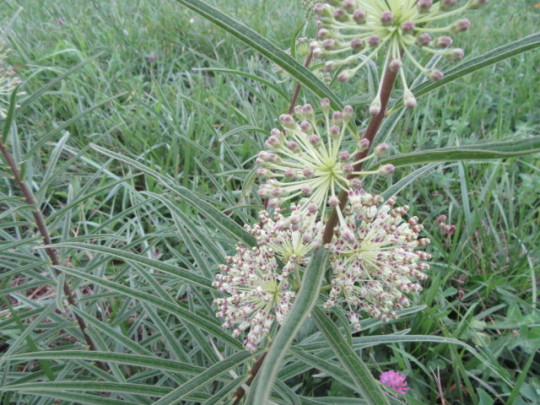
View On WordPress
#Asclepias hirtella (Prairie/Tall Green Milkweed)#Elephantopus carolinianus (Elephant&039;s Foot)#Strophostyles helvola (Amberique Bean/Trailing Fuzzy Bean)#Symphyotrichum novae-angliae (New England Aster)#Verbesina virginica (White Crownbeard/Frostweed)#Vernonia missurica (Missouri Ironweed)
0 notes
Text
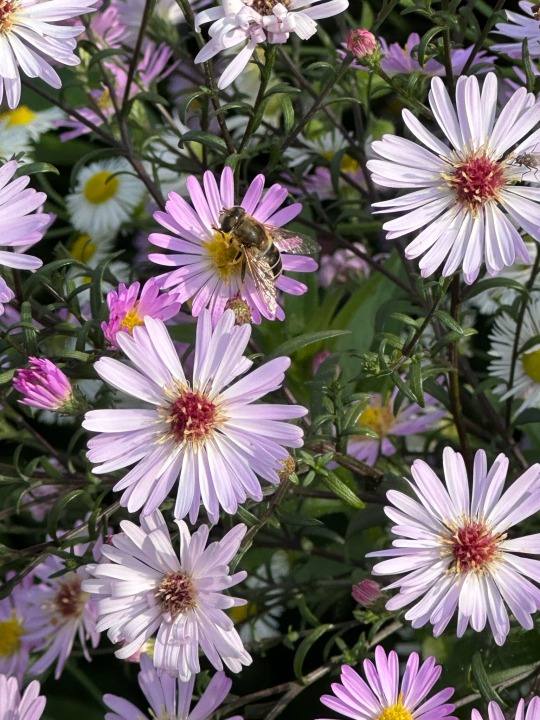


Plant of the Day
Tuesday 24 October 2023
In the border the Symphyotrichum 'Prairie Sky' (aster) is putting on a show with small pinky-mauve flowerheads which are held on dark purple stems.
Jill Raggett
#symphyotrichum#aster#plants#horticulture#gardens#garden#essex#herbaceous#herbaceous planting#perennial#pink flowers#Beth Chatto Garden
185 notes
·
View notes
Note
any chance you happen to have a list of flowers in everyones 1st year birthday cards?
i just got these off the wiki so apologies if any of this is wrong
Virtual Singer
Miku: sunflowers, gentians, hibiscus, chinese milk-vetch (on her dress)
Rin & Len: pansies, lady slipper orchid (on blazer)
Luka: grape hyacinth, sagebrush buttercups, society garlic flowers
MEIKO: egyptian star cluster, moss roses
KAITO: hyacinths, snowflake flowers
Leo/need
Ichika: geraniums, creeping zinnias (also some small flowers I couldn't identify)
Saki: dogwood flowers, white clovers
Honami: gerberas, chocolate cosmos, multiflora rose
Shiho: magnolias, violets (on her accessories)
MORE MORE JUMP!
Minori: daisy fleabanes, scotch broom, blue milkweed
Haruka: yellow cosmos, spider flowers
Airi: star jasmines
Shizuku: strawberry begonias, blossoms (the wiki said this was firethorn but imo it looks closer to some sort of blossom. the leaves aren't the right shape)
Vivid BAD SQUAD
Kohane: persian buttercup/ranunculus, iceland poppies
An: larkspur, tickseed
Akito: elatior begonias, lemon flowers
Toya: persian buttercup/ranunculus, yuzu flower (on blazer), pansies, wisteria (in the background)
WonderlandsxShowtime
Tsukasa: yellow tulips, persian violets, peonies
Emu: sea asters, skunkvine, chrysanthemum (ogiku style)
Nene: bougainvilleas/paperflowers, sunflowers, prairie gentians
Rui: common vervains/verbena, astrantia/great masterwort, hypericum erectum (a type of St John's Wort native to Japan, China and Korea. It doesn't have a common name)
25-ji, Nightcord de.
Kanade: crocuses, winter daphne
Mafuyu: cape marguerite, japanese rowan flowers, and i believe plumeria rubra
Ena: mountain laurels, baby blue eyes
Mizuki: bottle gourd flower, st john's wort, garden balsams. i'm not sure what the flower in their hair is, possibly some sort of lily?
the flowers are mostly the same on the second set of cards, though some are changed (notably Len who now has different flowers to Rin), and a few others gain or lose a flower or two. Tsukasa has fuchsias, An has paperflowers, airi i think has blossom and ena i think has yellow lupins now and that's as far as my flower knowledge goes.
#asks#cards#project sekai#you can probably be really delusional about the flower language in some of the cards. shippers have fun with that.#does it even count as delusional if it's something they put in the game? idk you guys have fun though
100 notes
·
View notes
Text


Machaeranthera tanacetifolia also known as Prairie Aster (Link)
#nature#perennials#photography#beautiful#flowers#purple flowers#prairie aster#wild flowers#meadow#earth#garden#gardens#gardening#plant#plant life#plants#flower meadow
25 notes
·
View notes
Text
10 October 2023 - Friday Field Notes

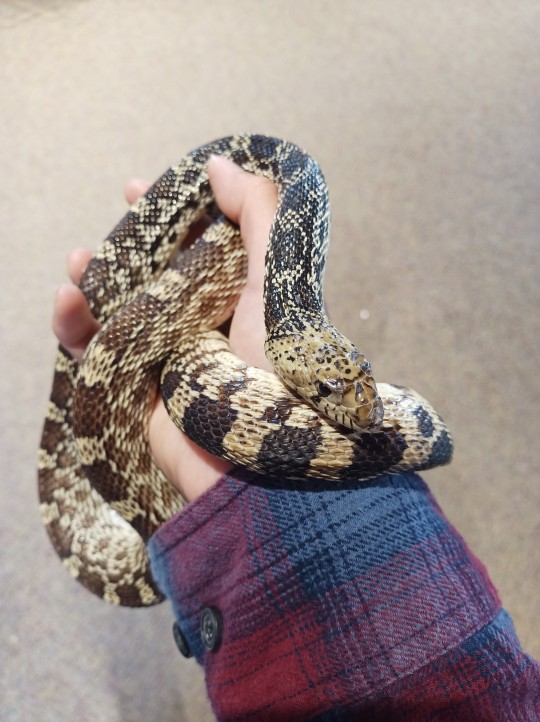
Fall is here. The days are getting shorter and the nights are getting colder. Got to spend some time at one of the other offices this week. All the leaves are starting to change and I haven't seen this little lady in a while.
This bullsnake is an education animal, not a pet. I know they're cute, but wildlife needs to stay wild and should not be kept as pets.
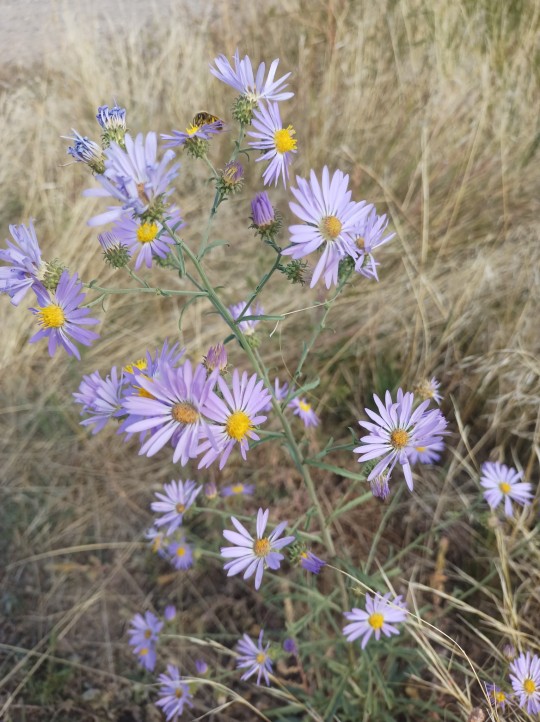
These tansy asters are some of the late blooms you'll find on the prairie. Many native flowering plants have staggered bloom cycles, some flowering plants bloom as early as Apri, if conditions are favorable, while others species bloom as late as October or November. In biodiverse rich ecosystems, you should be able to see flowers throughout the season at different times. They take turns sharing the stage. This not only reduces competition between plant species, but also allows wildlife species to utilize resources throughout the growing season. Healthy ecosystems are good at supporting all the things in it. Can you spot the bee?

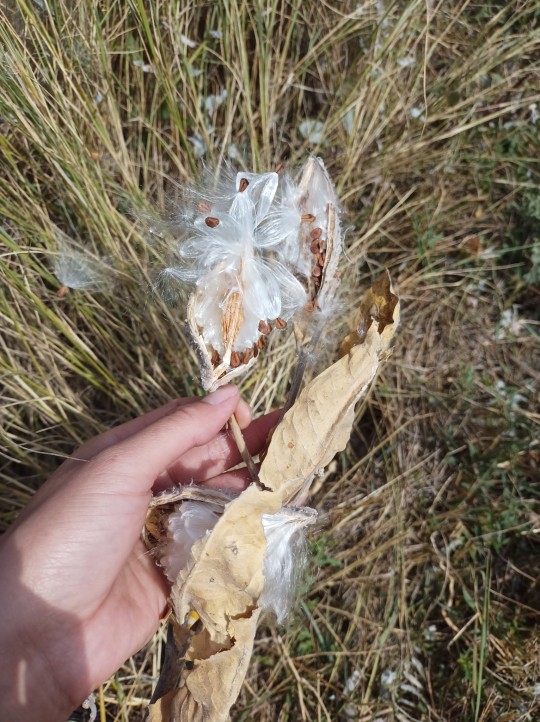

Most plants out here have gone to seed though, like the sunflowers, showy milkweed, and the false boneset.
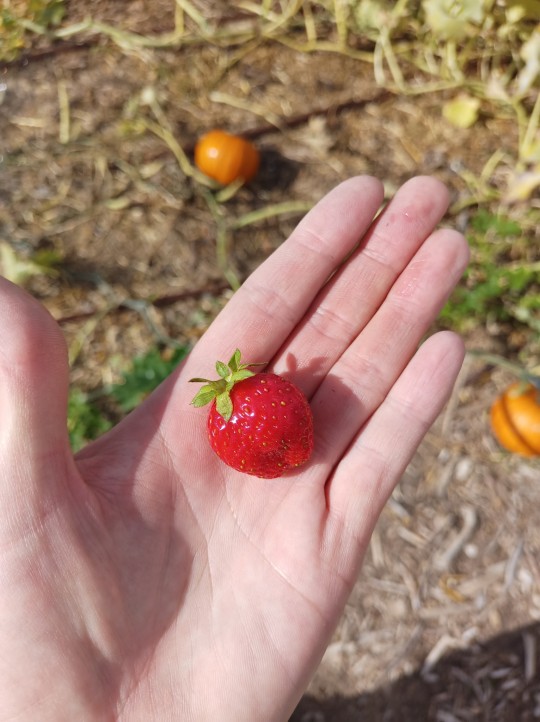
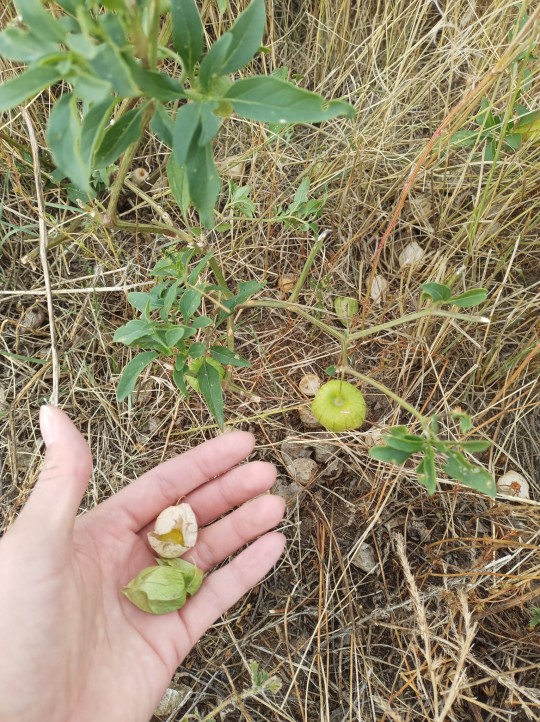
And it also means time to harvest and eat stuff. Strawbaby from the garden, a cultivated plant, and common ground cherry, found growing out on the prairie.
(@irrigone finally found some ground cherries that were ripe enough to eat! They have the consistency of a tiny grape and they kinda taste like sweet tarts candy. Not bad. Ate a couple and didn't die 👍 Would recommend as a light snack.)


Exoskeleton of a plains lubber and some fringe sage. One of my fav plants out here, smells delightful.

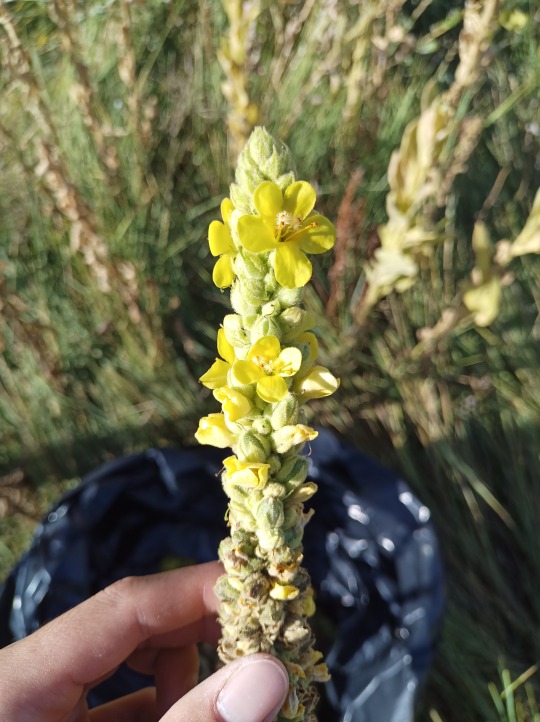


And one of my not so favorite plants (at least out here, totally cool if found in its native home range) Mullein is a biennial plant, meaning it has a two year life cycle, and it's an invasive weed in my neck of the prairie, and arguably, the rest of the Great Plains and grassland habitats in N. America.
The first year it grows as a basal rosette, close to the ground. Basal plants grow from the root base as opposed to forming new tissue towards the top. Most grasses grow this way too, which is why you can mow it without killing the whole plant. Same thing with mullein. In order to make sure the plant does grow back during manual removal you have to pull up the tap root as well.
The second year they'll flower, and produce these massive flower stalks that produce hundreds of seeds. And they're all tiny. Some stalks can get up to 3-4 feet tall and produce thousands of seeds that stay viable in the ground for years. It's no wonder they get everywhere and are so hard to manage.
Invasive species can take over ecosystems if left unchecked and reduce the biodiversity and overall health of native habitats.
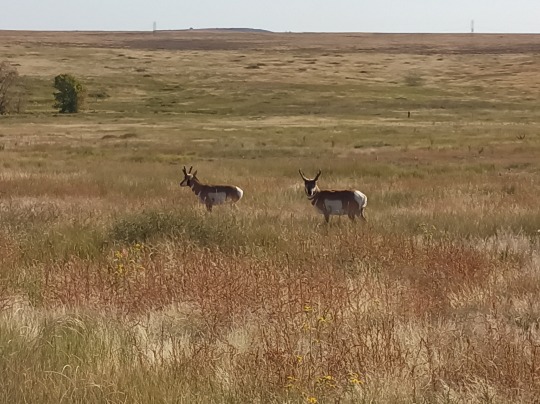
Weed management strategies and good land stewardship practices help support wildlife. Like these pronghorn. Wildlife will stick around in habitat if they can get the resources they need to survive and thrive.
Pronghorn, often referred to as antelope, are actually more related to giraffes than antelope. They're also the second fastest land animal in the world and can reach sustained running speeds of 55mph. They prefer wide open grassland habitat.
Fall is rutting season, so all the boys have been extra feisty lately and chasing everyone around. Been getting a lot more stare downs from them lately.
#friday field notes#nature#biology#ecology#nature conservation#little ghost on the prairie#lot of shots of my hands this week#me picking strange things off the ground#eating strange things off the ground#forgot to post this yesterday lol#shortgrass prairie#prairie#grasslands#pronghorn#plants#bullsnake
28 notes
·
View notes
Text
Moth of the Week
Isabella Tiger Moth
Pyrrharctia isabella

The isabella tiger moth is part of the Erebidae family and was first officially named in 1797 by James Edward Smith. The caterpillars of this moth are referred to as woolly worms, woolly bears, and banded woolly bears. In Canadian folklore, these caterpillars serve as predictors of harsh or east winters depending on their hair’s length and color.
Description The isabella tiger moth’s body and wings range from tan to yellow-orange. The hindwings are a lighter shade than the forewings with both marked by black spots and faint lines. In females, the hindwings have a pink tone. The body also has a black spotted pattern with reddish-orange forelegs. The moth’s color darkens at the head to a red-orange or brown.
Average wingspan of ≈4.35 cm (≈1.7 in)
Diet and Habitat The caterpillars eat many plants and trees such as grasses, asters, birches, clover, corn, elms, maples, milkweed and sunflowers in deciduous woodlands and prairies. Adults drink nectar from host plants. They use a proboscis, which is like a feeding tube. These moths are found in all of the United States except for the states of Alaska and Hawaii, much of Mexico, and southern Canada. The isabella tiger moth also can be found in the Arctic.
Mating The isabella tiger moth produces two generations a year in its northern range and usually a three generations in the south. In May during the evening, females let out pheromones from a scent gland from their abdomen to attract mates. Males fly in zig-zag patterns and mate with the females. Females lay clusters of 50 or more eggs on the host plants. The eggs will hatch in 5 to 12 days. The eggs hatched in the fall will give way to caterpillars that will freeze in the winter, thaw in spring, and continue the cycle.
Predators Woolly bears will curl into a ball if feeling threatened. The stiff hairs protect the caterpillar from wasps, flies, mantids, birds, and other predators, such as humans. Touching a woolly bear is discouraged because these hairs may cause dermatitis, however they are not venomous and typically don’t cause irritation.
Fun Fact Woollybear festivals are held in several locations in the fall with games, costumes, and a winter prediction.
(Source: Wikipedia, Moth Identification, BugGuide, Minnesota Seasons, iNaturalist, Iron Tree Service, Wildlife in Winter)
#animals#bugs#facts#insects#libraryofmoths#moth#mothoftheweek#lepidoptera#Erebidae#isabella tiger moth#Pyrrharctia isabella
34 notes
·
View notes
Text



New England Aster found at a local park with some cute prairie restoration efforts going on
9 notes
·
View notes
Text
Embrace the Beauty of America: Exploring Regional Wildflowers
🌹🌸����🌺🌷🌻🥀🌼🪷🪻

It's time to step away from your screens and immerse yourselves in the natural wonders that the United States has to offer. In this blog post, we're taking you on a colorful journey through the regional wildflowers of America. From the East Coast to the West Coast, the United States boasts an incredible diversity of native blooms that are waiting to be discovered. So, grab your hiking boots and a camera because we're about to embark on a floral adventure like no other.
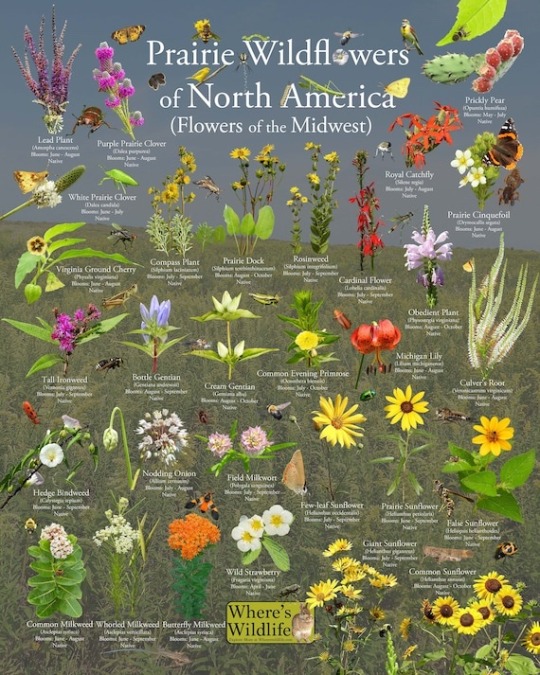
1. Northeastern Treasures:
Our journey begins on the East Coast, where the lush forests and meadows of the Northeastern United States come alive with a stunning array of wildflowers. In the spring, keep an eye out for the delicate Trillium and the vibrant Virginia Bluebell. As summer approaches, the New England Aster and the Wild Columbine paint the landscape with their vivid colors.
2. The Midwest's Floral Symphony:
Moving westward to the heart of America, the Midwest is home to some captivating wildflowers. The iconic Purple Coneflower, also known as Echinacea, is a true symbol of this region. Don't miss the cheerful Black-eyed Susan and the elegant Prairie Smoke as they bloom across the rolling plains.
3. Wildflowers of the Great Plains:
Venturing further west into the Great Plains, you'll be treated to a unique display of wildflowers adapted to this harsh environment. Look for the bright orange Butterfly Weed and the Plains Coreopsis. These hardy blooms thrive in the open spaces of America's heartland.
4. Mountain Majesty:
As we head toward the Rocky Mountains and the Southwest, you'll encounter wildflowers that have adapted to high altitudes and arid conditions. The Rocky Mountain Columbine, with its striking blue and white petals, is a must-see. The Desert Marigold adds a splash of yellow to the arid landscapes of the Southwest.
5. Pacific Coast Paradise:
Finally, our journey concludes on the stunning Pacific Coast. Here, you'll find the iconic California Poppy, which blankets fields with a vibrant orange hue in the spring. Explore the lush meadows of the Pacific Northwest to discover the enchanting Tiger Lily and the Western Trillium.
Whether you're a nature enthusiast or simply looking for a unique adventure, exploring the regional wildflowers of the United States offers a delightful and Instagram-worthy experience. These native blooms not only beautify our landscapes but also provide essential habitat and nourishment for pollinators. So, grab a field guide, hit the trails, and immerse yourself in the botanical wonders that make America's wilderness so special. Don't forget to capture the beauty of these wildflowers, share your experiences, and inspire others to appreciate and protect our natural treasures. Happy wildflower hunting! #wildflowers #flowers #botany #history #usa
If you liked this post please follow for more!
Recommended:
9 notes
·
View notes
Note
I have a follow up question from your seed bombing post, how do you go about finding the seeds? My friend asked I help her seed bomb the abandoned lot behind her house in CO and I know a lot of the native species that would do good there but she's had little luck finding any of these at stores near her. Where I live, I have been able to source seeds from my old college or garding stores have had them but she doesn't have those same connections and stores there dont seem to carry most native species. Any tips?
When you grow your own plants, they will give you a WEALTH of seeds. I impulse ordered swamp milkweed (young plant in pot) from a native plant nursery early in 2022 and it not only flourished and raised monarchs, but gave me hundreds and hundreds of seeds.
In late fall and early winter, also, many plants are going to seed, so you can just...gather from the side of the road basically. Where I live, goldenrods, asters, and ironweed still have seeds hanging onto them.



I got a lot of my seeds by collecting at the nature center where I volunteer, especially in their prairie area
409 notes
·
View notes
